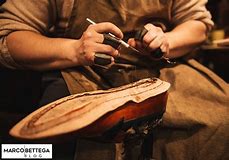Wenn wir in diesen schwierigen Zeiten, in denen wir gezwungen sind, uns mit der neuen Realität auseinanderzusetzen, die uns so viele Opfer abverlangt, über Poesie sprechen, ist Poesie nützlich, da sie uns beim Träumen helfen kann und uns nicht das Gefühl gibt, allein zu sein. Und welche größere Schönheit des poetischen Ausdrucks erlaubt es uns, die Gedanken und Gefühle eines jeden von uns zu verstehen?
Die Poesie ist für diejenigen gedacht, die die Musikalität der Worte, die Vielfalt der Ausdrücke, die Kombination von Reimbegriffen lieben, aber auch für diejenigen, die das Bedürfnis verspüren, ihre Gefühle einfach mitzuteilen.
In einem problematischen Moment wie diesem, den wir durchleben und der uns von den Regierungsbehörden aufgrund der Verbreitung des Corona Virus aufgezwungen wird, kann die Poesie eine geeignete "Medizin" sein, denn jeder von uns hat Zeit, seinen Wunsch, seine Angst, seinen Lebenswillen und seinen Traum auszudrücken.
Nach der Dunkelheit kommt das Licht, und es wird ein Weg sein, um Träume und Hoffnung eine kraftvolle Zukunft zu ermöglichen. Der Alptraum wird enden, und wir werden unser normales Leben zurückgewinnen, mit mehr Bewusstsein, vielleicht sogar besser als zuvor. Wir werden die persönlichen Räume zurückerhalten, die wir brauchen, wir werden mehr versöhnliche Gesten und Zärtlichkeit gegenüber anderen aufbringen, mit einer sicherlich breiteren Lebensperspektive.
di Salvatore Cifalinò
übersetzt von Monika M. Geuer


























